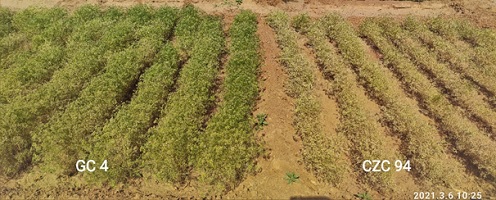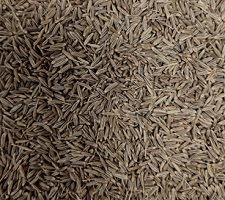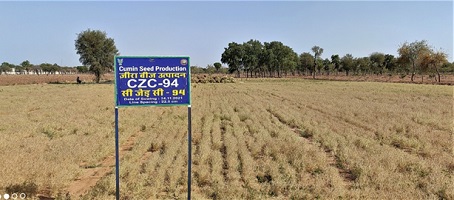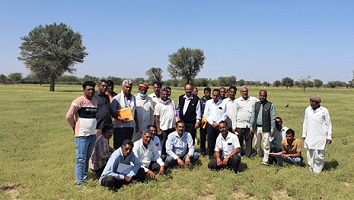India is the leader in the Cumin (Cuminum cyminum L.) production and export. The Indian Cumin Export has increased 10 times in the past decade reaching to INR 42531 Million in the Year - 2021. The increasing demand of Cumin Seeds in the international market is a boom for the Indian farmers. The Cumin Plant needs cool dry weather for its healthy growth. The terminal heat stress prevailing in the Arid Regions also reduces the productivity. The Cumin cultivation dominated by the variety GC 4 calls for its varietal diversification. Its cultivation needs 4 to 5 irrigations during 120 to 135 Days crop duration.

The short-duration Cumin Genotype “CZC-94” developed by the ICAR-Central Arid Zone Research Institute, Jodhpur, Rajasthan shows earliness in the flowering (40 to 42 Days) and maturity (100 to 105 Days) and requires less irrigation. The shorter maturity duration favors timely sowing - early harvest and late sowing - timely harvest models. The CZC-94 is a win-win option for both the crop and growers. The shorter duration may also allow the Cumin spread in the non-conventional dry areas with short cold duration. In the Rabi 2021-22, the CZC-94 was commercially cultivated by 15 Cumin growers of the arid regions. The farmers response was encouraging and they are highly convinced by the under mentioned benefits of the CZC-94 shorter duration over the existing cultivars.



It not only requires less irrigation / water and time in germination but, also requires only 3 irrigations after germination to harvest, thus, saving 1 to 2 irrigations. The landholdings are large in the arid regions, with limited water availability coupled with the limited hours of electricity supply. These constrains the limits cropping intensity, farmer can increase the area of Cumin cultivation with CZC-94 as it can be sown upto mid-December without reduction in the yield.


The Cumin cultivation require 3 to 4 prophylactic pesticide sprays to manage Alternaria Blight Disease but, CZC-94 being short duration, remains for the less period in field, thus, demanding 2 to 3 pesticide sprays only, therefore, reduces the cultivation cost and increases the chances of having produce with minimum pesticide residue.
The Cumin Crop productivity is significantly reduced by abrupt occasional increase in day temperature and dry winds in February-March Months, but, CZC-94 escapes the terminal heat stress encountered during the maturity causes forced senescence. Over the Years, the Western Disturbances causing the untimely winter rains or cloudy weather at the flowering and post-flowering stage has become a normal phenomenon; CZC-94 earliness shows better adaptation to the climatic vagaries at it escapes the risky period by running fast for maturity by mid of the February Month.
The Cumin is a leading cash crop for the Arid Region farmers. The early harvest from CZC-94 cultivation can fetch higher price in the open market and early cash in the hands for CZC-94 growers.
(Source: ICAR-Central Arid Zone Research Institute, Jodhpur, Rajasthan)







फेसबुक पर लाइक करें
यूट्यूब पर सदस्यता लें
X पर फॉलो करना X
इंस्टाग्राम पर लाइक करें